We use information collected through cookies and similar technologies to improve your experience on our site, analyze how you use it and for marketing purposes.
Your privacy settings
We and our partners use information collected through cookies and similar technologies to improve your experience on our site, analyze how you use it and for marketing purposes. Because we respect your right to privacy, you can choose not to allow some types of cookies. However, blocking some types of cookies may impact your experience of the site and the services we are able to offer. In some cases, data obtained from cookies is shared with third parties for analytics or marketing reasons. You can exercise your right to opt-out of that sharing at any time by disabling cookies.
Manage Consent Preferences
Necessary
Always ON
These cookies and scripts are necessary for the website to function and cannot be switched off. They are usually only set in response to actions made by you which amount to a request for services, such as setting your privacy preferences, logging in or filling in forms. You can set your browser to block oralert you about these cookies, but some parts of the site will not then work. These cookies do not store any personally identifiable information.
Analytics
These cookies and scripts allow us to count visits and traffic sources, so we can measure and improve the performance of our site. They help us know which pages are the most and least popular and see how visitors move around the site. All information these cookies collect is aggregated and therefore anonymous. If you do not allow these cookies and scripts, we will not know when you have visited our site.
Embedded Videos
These cookies and scripts may be set through our site by external video hosting services likeYouTube or Vimeo. They may be used to deliver video content on our website. It's possible for the video provider to build a profile of your interests and show you relevant adverts on this or other websites. They do not directly store personal information, but are based on uniquely identifying your browser and internet device. If you do not allow these cookies or scripts it is possible that embedded video will not function as expected.
Google Fonts
Google Fonts is a font embedding service library. Google Fonts are stored on Google's CDN. The Google Fonts API is designed to limit the collection, storage, and use of end-user data to only what is needed to serve fonts efficiently. Use of Google Fonts API is unauthenticated. No cookies are sent by website visitors to the Google Fonts API. Requests to the Google Fonts API are made to resource-specific domains, such as fonts.googleapis.com or fonts.gstatic.com. This means your font requests are separate from and don't contain any credentials you send to google.com while using other Google services that are authenticated, such as Gmail.
Marketing
These cookies and scripts may be set through our site by our advertising partners. They may be used by those companies to build a profile of your interests and show you relevant adverts on other sites. They do not store directly personal information, but are based on uniquely identifying your browser and internet device. If you do not allow these cookies and scripts, you will experience less targeted advertising.
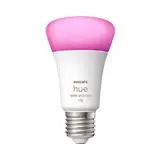
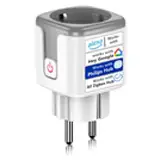
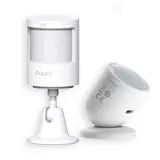
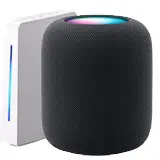
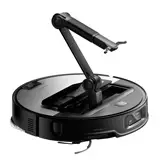

What is a smart home and how can it improve your life?
Imagine this: You wake up with sunlight gently streaming through the window. The coffee maker is already brewing your favorite coffee, and music that motivates you to start your day begins to play. All this, without you having to lift a finger. Sound like science fiction? No! It's the reality of a smart home.
What is a Smart Home?
A smart home, also known as a connected home, is a residence equipped with interconnected devices that can be controlled remotely, often through a smartphone, tablet, or voice assistant. These devices can include lighting systems, thermostats, door locks, appliances, security systems, and much more. The key is the Automation and remote control.
Key Components of a Smart Home
How a Smart Home Can Improve Your Life?
A smart home offers a wealth of benefits that can improve your life in several ways. From comfort and convenience to security and energy savings, the possibilities are endless. Let's look at some concrete examples:
Comfort and Convenience
This is perhaps the most obvious benefit. Imagine being able to control the lighting, temperature, and entertainment from the comfort of your sofa. Forgot to turn off the lights when you left the house? No problem, you can do it with your phone. Want the house to be warm when you get home from work? Schedule the smart thermostat to turn on an hour earlier.
Enhanced Security
Smart security systems can give you peace of mind, even when you're away from home. Security cameras, smart locks, and motion sensors can help you protect your home from intruders and keep you informed about what's happening on your property.
Energy Saving
A smart home can help you reduce your energy consumption and save money on your bills. Smart thermostats, smart light bulbs and smart plugs can help you control your energy consumption and avoid waste.
Accessibility and Assistance
For people with reduced mobility or disabilities, a smart home can provide greater independence and assistance. Voice control and automation can make it easier to perform everyday tasks. In addition, many of these solutions are complemented by smart home app optionsThe new home automation systems, which make it possible to customize and manage the home environment according to individual needs. This not only improves quality of life, but also promotes autonomy by allowing users to control aspects such as lighting, temperature and security with ease. Ultimately, a smart home becomes a more inclusive space tailored to your requirements.
Practical Examples of Smart Home Applications
To give you a clearer idea, let's look at some examples of how you can use smart technology in your daily life:
Recommendations and Best Practices for Creating Your Smart Home
Ready to start turning your house into a smart home? Here are some tips:
Planning is key.
Before buying any device, think about your needs and priorities. What do you want to achieve with a smart home? What problems do you want to solve? Making a list will help you focus your efforts and avoid impulse buys.
Choose a Platform
There are several smart home platforms, such as Amazon Alexa, Google Assistant, and Apple HomeKit. Research each one and choose the one that best suits your needs and the devices you already have.
Start small.
You don't have to turn your house into a smart home overnight. Start with a couple of basic devices, like smart bulbs or a smart thermostat. As you get more comfortable, you can add more devices and features.
Prioritize Safety
Security is paramount. Make sure all your smart devices are protected with strong passwords. Keep the software updated to protect yourself from vulnerabilities. Consider using a separate Wi-Fi network for your smart devices.
Check Compatibility
Before buying any device, check that it's compatible with your platform and with other devices you already own. Compatibility ensures all your devices work together seamlessly.
Consider Privacy
Understand how your smart devices collect and use your data. Adjust privacy settings to protect your personal information. Read manufacturers' privacy policies before buying any device.
Common Troubleshooting
Even with the best planning, you might run into problems with your smart home. Here are some tips for troubleshooting common issues:
The Future of the Smart Home
The smart home is constantly evolving. In the future, we can expect to see even more integration of artificial intelligence, robotics, and augmented reality. The ability to anticipate our needs and adapt the environment to our preferences will be ever greater. The 5G connectivity It will enable faster and more reliable communication between devices, opening up new possibilities for automation and remote control. Furthermore, security and privacy will remain priorities as the technology evolves.
Conclusion
A smart home isn't just a passing trend. It's an investment in your comfort, security, and energy efficiency. It can simplify your life, help you save money, and give you peace of mind. If you're thinking about turning your house into a smart home, now's the perfect time to start! Don't get overwhelmed, start small, plan carefully, and enjoy the benefits of smart technology. Share this article with your friends and family and start building your smart homes together.
Related Posts
TOP 10 Must-Have Smart Home Devices
Do you dream of a home that understands you, adapts to your needs and makes your life easier? Home automation, or smart homes, are no longer a thing of the future. They are an accessible reality that can transform your daily life. In this article, we present the 10 must-have devices to turn your home into a smart home.
How to Choose a Smart Home System: A Beginner's Guide
Do you dream of a home that responds to your needs? Can you imagine controlling the lights, temperature and even the coffee maker from your phone? Welcome to the world of smart homes! Choosing the right system may seem complicated, but don't worry, this guide is designed for beginners like you. What is a smart home? A ...
First steps to automate your home
Can you imagine coming home and having the lights turn on by themselves, your favorite music start playing and the temperature is perfect? Home automation is no longer a thing of the future; it's here, it's affordable and it can make your life more comfortable and efficient. But where do you start? This article will guide you step by step ...
How much does it cost to automate a house? Budget-friendly and premium options
Dreaming of a smart home? Lights that turn on by themselves, thermostats that adjust to your liking and blinds that lower at dusk. Home automation is no longer a thing of the future, it's the present! But how much does it cost to make this dream a reality? The answer, like almost everything in life, is: it depends. Let's ...